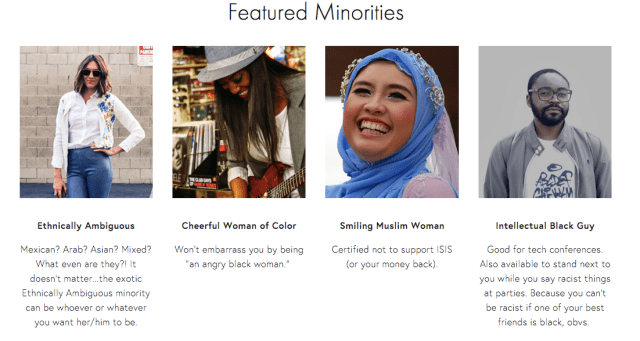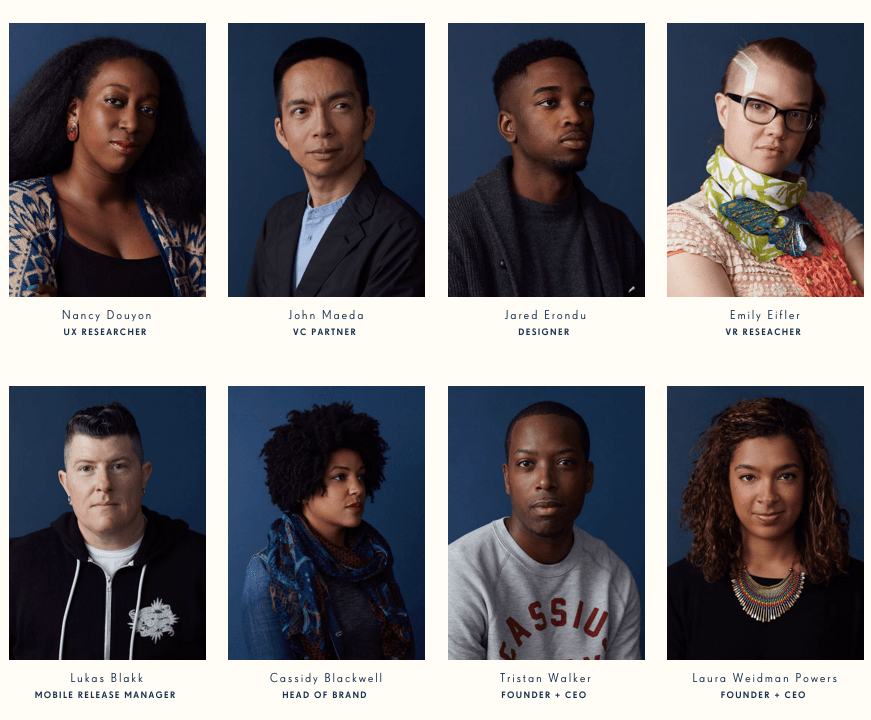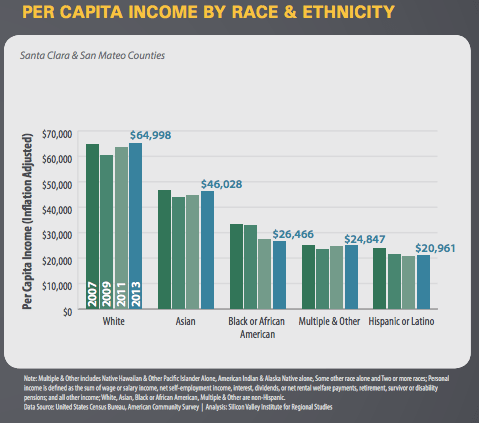The tech industry, particularly Silicon Valley, doesn’t have a great reputation when it comes to diversity and inclusiveness. Can you name 100 people of marginalized status who’ve made a living in Silicon Valley? How many of them are CEOs, or are self-taught, or immigrants? How many have a disability? These and many other intersections of structural oppression appear in The Techies Project, a collection of 100 portraits and interviews with underrepresented tech industry folks of Silicon Valley.
San Francisco-based photographer Helena Price put together the project after putting out a call for submissions this past January. For several months, Price collected the stories of 100 people who work in Silicon Valley who don’t fit the “techie” stereotype, even though they do work in tech. Price explained to Tech Crunch,
There’s an experience that comes from seeing the word ‘techies’ and knowing that it has turned into this kind of derogatory, loaded term that kind of makes people’s skin crawl now. Now people hear it and they sort of cringe. Everybody has an image in mind of what that word is. For them, to see that word, expect one thing, and then see a grid of images that don’t look like what they expect is an experience in itself. And if that’s all they see and then they walk away, I feel kind of satisfied.
Price went on to explain that the “impetus” of the project was to explore “people’s complicated relationships with tech.” She elaborated,
From the outside, people kind of hate tech right now. So that’s a thing. For me, that’s obvious to everyone I think. And internally, there’s definitely some clashing that’s happening where people, one side still is very adamant about tech being a meritocracy and “We want diversity but where are they?” There’s that chatter but then there’s people who are starting to be open about their experiences in tech. Medium’s helping with that, Twitter’s helping with that.
The project launched today with 100 profiles, but it’s not over yet; Price is still collecting submissions from Silicon Valley residents. The project currently focuses on Silicon Valley specifically.
As stated, the photo project delineates different intersections of marginalization up top, so that a viewer can select various intersections and divide up the list accordingly. For example, one could select “Women” and “POC” (people of color) and “Trans/Genderqueer” to narrow down the list into the two people (out of the 100 interview candidates) who fit that description. Here are the categories:
 Personally, this categorization system struck me as a bit strange, but I thought I might be the only one who felt that way, so I pushed those feelings down at first. However, in reading more about the project, I’ve seen some hesitation about it from others as well. I’ll explain why that is in a moment.
Personally, this categorization system struck me as a bit strange, but I thought I might be the only one who felt that way, so I pushed those feelings down at first. However, in reading more about the project, I’ve seen some hesitation about it from others as well. I’ll explain why that is in a moment.
First, though, let me say that I think that projects like this, at least from the standpoint of visibility, can be invaluable as a tool for inspiring people to pursue the career they want. Many of the stories in the interviews, at least those that I have read, described how the participants had to overcome adversity in their own lives in order to achieve the successes they’ve had. They prove that it is possible to succeed in Silicon Valley. But they also prove that it is not easy, and that it is still not achievable for most people, and that they have experienced more adversity than their more privileged peers.
Unfortunately, though, I’m not entirely sure whether that’s been what others have taken away from the photo project. That’s how I chose to interpret it, because I already know that Silicon Valley isn’t an inclusive place, so to me, these stories come across as narratives of the unique hurdles faced by marginalized people. However, I think that the potential downside of the project, at least for a reader who isn’t as familiar with the structural biases in the tech industry, would be to make people feel like the tech industry is a more diverse place than it actually is. It is possible for marginalized people to succeed in spite of adversity, but that adversity is still a significant problem for many.
This collection, at least in its current form, doesn’t acknowledge the hugeness of Silicon Valley, either. By focusing on the 100 stories in its launch package, The Techies Project has the ability to hone in on what makes each of these people’s stories unique. However, by emphasizing the categorization filter, The Techies Project comes across almost like a LinkedIn collection of people whose identities are “attributes” that describe them, rather than pieces of their larger story. In other words, I really enjoy reading these interviews, but the categorization aspect feels strangely utilitarian, even tokenizing, rather than encouraging the viewer to fully grasp that these are real people with unique situations that go beyond just their “categories.”
It might also help if the site included some information about the working climate of Silicon Valley. According to the 2015 Silicon Valley Index, Silicon Valley has 1,481,442 jobs and a population of 2.97 million. The report also states that there’s “a large gap between the highest and lowest earning racial/ethnic groups, which is larger in Silicon Valley ($44,037) and San Francisco ($50,069) than in California ($28,332) or the United States ($17,716).” Also, men are still raking in most of the dough there: they “earn up to 61% more than their female peers,” which is a gap that is also more pronounced in Silicon Valley than in SF or the rest of California. This chart of per-capita income, demarcated by “Race & Ethnicity,” also shows that white people in Silicon Valley are earning much more than everybody else:
The “stereotypes” about Silicon Valley are not based on an inexplicable bad feeling that people have about the tech industry—they’re based on data. Although it’s incredibly important to recognize the hard work done by people who’ve become exceptions to the rule, it’s also important to recognize that those people are exceptions—and that they had to work a lot harder than their peers.
It’s also important to note that Silicon Valley itself isn’t reflective of the tech industry as a whole, nor is it necessarily a place that everyone in tech aspires to work. Highlighting only the people who’ve succeeded within this specific institution serves primarily to hold up and glamorize the institution itself, which might explain why the project got funded by tech juggernauts Medium, UENO, and Facebook. Facebook has faced criticism for its lack of diversity for a while now.
The goal of The Techies Project, according to its About page, is “to show the outside world a more comprehensive picture of people who work in tech, and to bring a bit of attention to folks in the industry whose stories have never been heard, considered or celebrated. We believe storytelling is a powerful tool for social impact and positive change.”
I definitely agree with the goal, particularly the second sentence; the lengthy interviews serve to humanize the participants and give them the invaluable opportunity to share their stories in their own words. These stories definitely illustrate a more “comprehensive picture” of the tech industry that celebrates unheard voices. But it’s also important to remember that the “comprehensive picture” of the tech industry still includes a majority of very privileged people from privileged backgrounds and circumstances.
Because of that, it’s important to look at other ways to build awareness around the problems in tech, and sometimes, those awareness campaigns should make people feel a bit uncomfortable. For example, here’s a great project by Arwa Mahdawi, creator of a cutting parody site called “Rent-A-Minority.”

The front page of “Rent-A-Minority” advertises four “Featured Minorities,” including an “Ethnically Ambiguous” minority, a “Cheerful Woman of Color,” a “Smiling Muslim Woman” and an “Intellectual Black Guy.”
I think the entire “Rent-A-Minority” website pretty much sums up whatever point I was trying to make here. Ultimately, I think we should be making people in power feel uncomfortable, not comfortable, about structural inequality. That means highlighting the problems that marginalized people face, while also pressuring people in power to fix those problems.
It’s important that people in power read these perspectives as well — both in the form of sites like Techies Project and sites like Rent-a-Minority — and then think seriously about what changes they could make to allow their industry to become a more accessible place. That doesn’t just mean patting ourselves on the back because some marginalized people have succeeded. It also means finding easier pathways so that even more people can succeed.
(via Tech Crunch, image via The Techies Project)
—The Mary Sue has a strict comment policy that forbids, but is not limited to, personal insults toward anyone, hate speech, and trolling.—
Follow The Mary Sue on Twitter, Facebook, Tumblr, Pinterest, & Google+.









